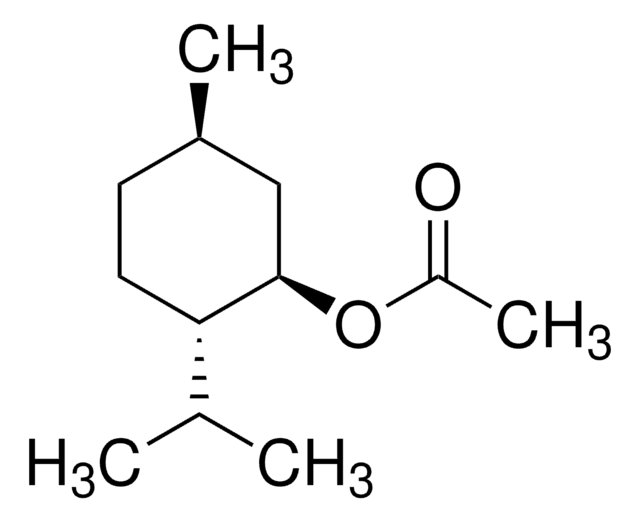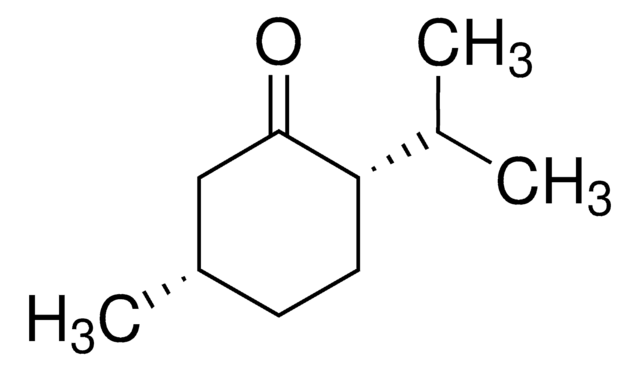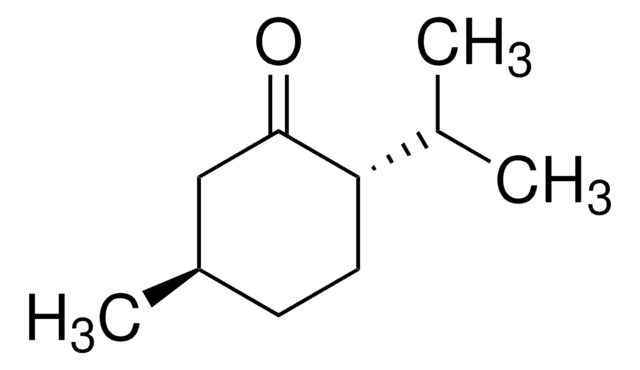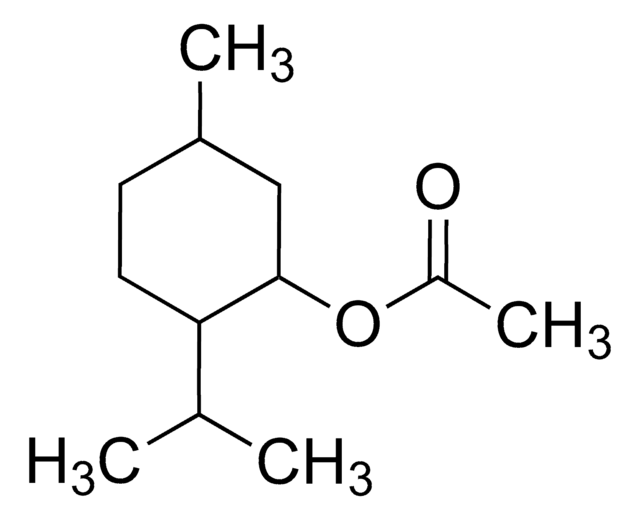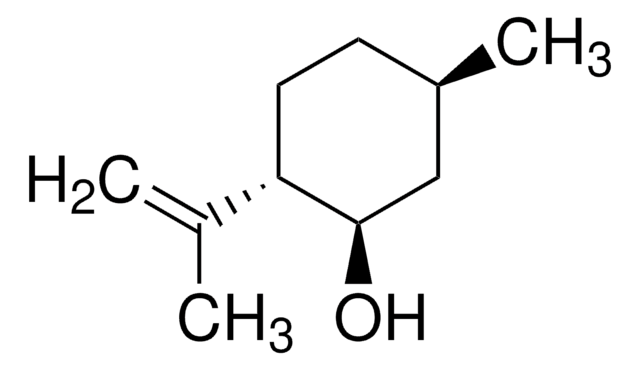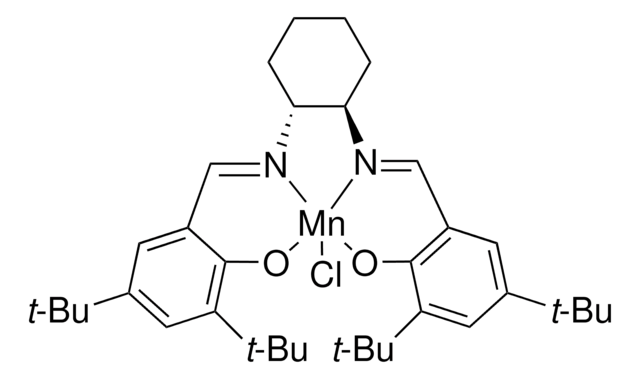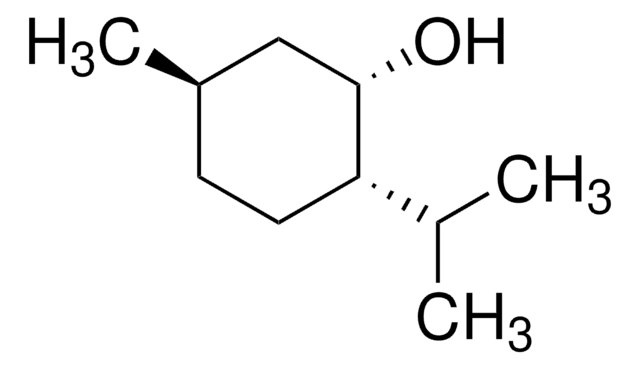422770
Menthyl acetate
97%
Synonym(s):
(±)-Menthol acetate, (±)-Menthyl acetate, dl-Menthyl acetate
About This Item
Recommended Products
Assay
97%
form
liquid
refractive index
n20/D 1.447 (lit.)
bp
228-229 °C (lit.)
density
0.922 g/mL at 25 °C (lit.)
functional group
ester
SMILES string
CC(C)C1CCC(C)CC1OC(C)=O
InChI
1S/C12H22O2/c1-8(2)11-6-5-9(3)7-12(11)14-10(4)13/h8-9,11-12H,5-7H2,1-4H3
InChI key
XHXUANMFYXWVNG-UHFFFAOYSA-N
Looking for similar products? Visit Product Comparison Guide
General description
Menthyl acetate is a monoterpene that is widely utilized as a flavoring agent in the food and beverage industry.
Application
Choose from one of the most recent versions:
Already Own This Product?
Find documentation for the products that you have recently purchased in the Document Library.
Customers Also Viewed
Articles
-Cymene; Linalool; Menthol; α-Terpineol; Menthyl acetate
Protocols
Cymene; 4,5,6,7-Tetrahydro-3,6-dimethylbenzofuran; Linalool; Menthol; Menthone; Menthyl acetate; Germacrene D; Bicyclogermacrene; Thymol
Our team of scientists has experience in all areas of research including Life Science, Material Science, Chemical Synthesis, Chromatography, Analytical and many others.
Contact Technical Service